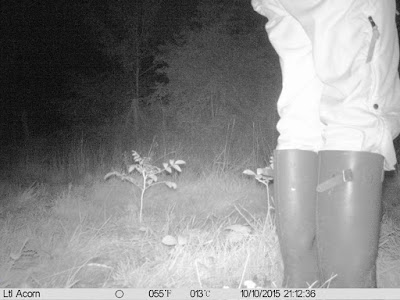Money Spider (Linyphiidae)
September brought cold nights and tiny, immaculate spider’s webs in the grass
They are still throwing out unwelcome visiting wasps...
and are bringing in nectar and pollen from Himalyan balsam, Impatiens glandulifera. It begins to flower in July, is highly invasive, and is the tallest annual plant
with seed pods which burst, spreading them far and wide.
Beekeepers have a system for marking queens on their thorax with a coloured pen to denote which year they were born,
A small pink dot remain's from last year's marking
but generally I prefer to leave them unmarked so that I look for more than just a queen with a dot on her head. How influential are those that impress us first with their teaching!
Contain her, don't squash her!
It’s been good practice too for Tom and Rachel to find unmarked queens and now they are good queen spotters, it’s useful to mark one or two in the larger colonies. Job done!
Can you spot the queen? Answer next month...
It’s not easy to see queens amongst the 50,000 workers in summer...
unless she’s a big 1st or 2nd generation of commercially produced stock. As they interbreed with local drones, the queens get smaller. I look for a bee with long legs and a spidery walk, especially in the brood area where I’d expect to find her. Hope, not expect.
a retinue of worker bees surrounding her, exchanging food and pheromones with the queen, which over 24 hours, informs all the workers that the queen is still there.
Trophallaxis
They in turn pass on the pheromones to each other, called trophallaxis.
Hawthorn (Crataegus monogyna)
Blackening Waxcap (Hygrocybe conica)
There are fairies at the bottom of the garden.
Fuchsia
They fill every nook and cranny with comb in a nectar flow in the summer
so there was a bit of housekeeping to do where the girls had built comb in an area of the hive without a frame.
They were quite calm while we cut it out
but there was surprisingly little food in it due to the wet and cold August, so we’ll have to make sure they have enough stores for the winter.
Forest Bug (Pentatoma rufipes) on hive lid
Gillybee x































































